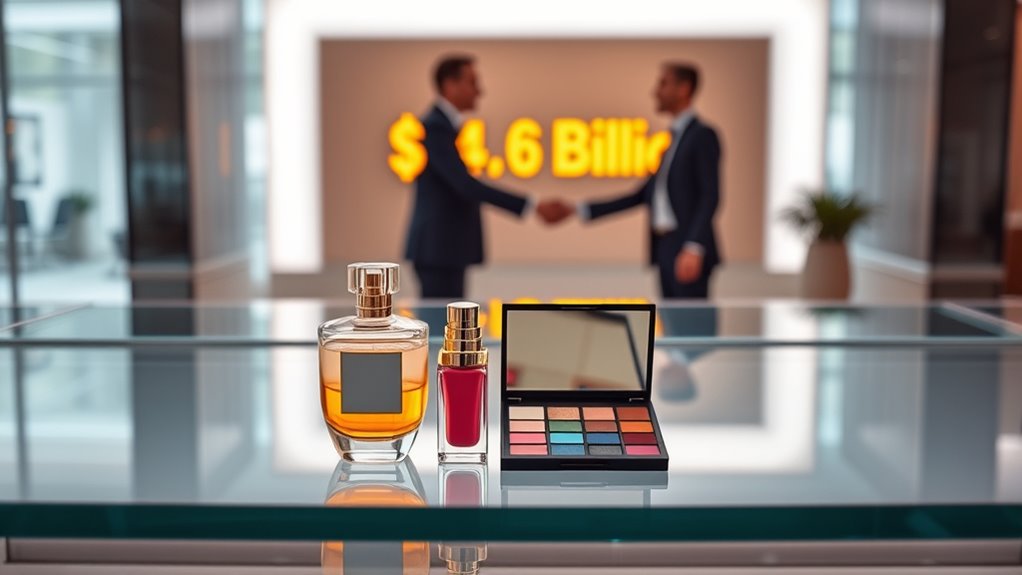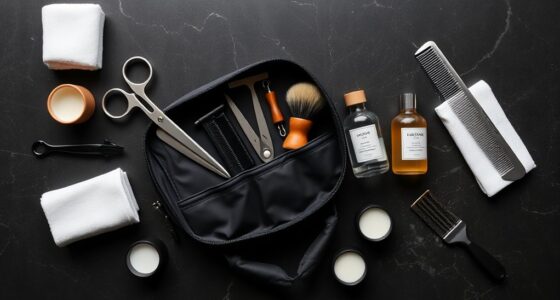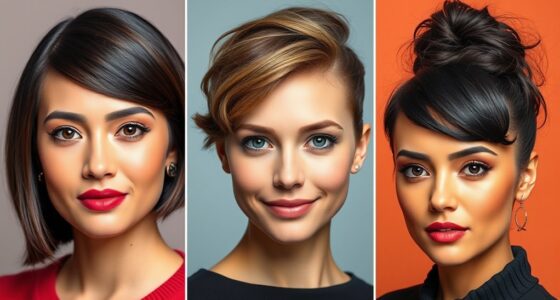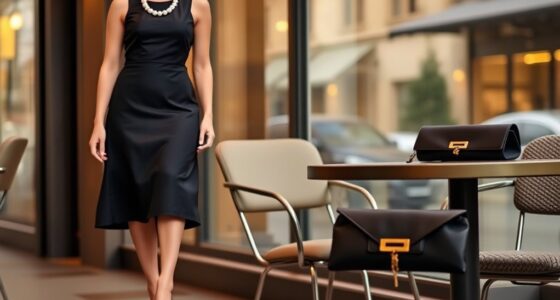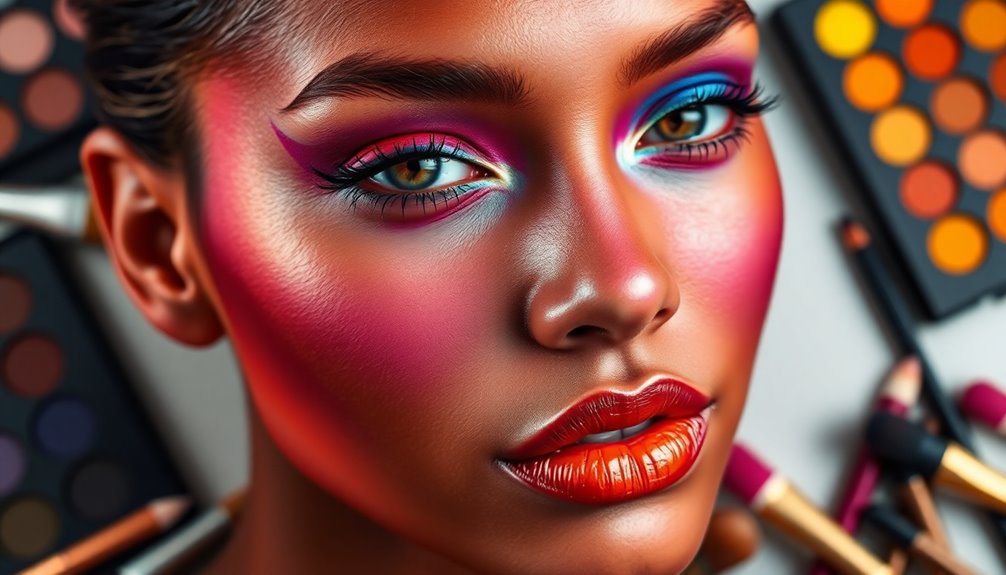L’Oréal’s $4.6 billion acquisition of Kering’s beauty division is a strategic move to boost its position in the luxury cosmetics and fragrance market. This deal gives you access to high-end brands like House of Creed and expands L’Oréal’s luxury portfolio globally. It also helps Kering focus on its core fashion and leather goods businesses. To learn more about how this move reshapes the beauty industry, keep exploring the details behind this significant deal.
Key Takeaways
- L’Oréal is acquiring Kering’s beauty division for approximately $4.6 billion.
- The deal is expected to close in the first half of 2026.
- It includes brands like House of Creed and enhances L’Oréal’s luxury portfolio.
- The acquisition expands L’Oréal’s presence in the high-end luxury beauty segment.
- It allows L’Oréal to develop and distribute products for Kering’s fashion houses via licensing agreements.
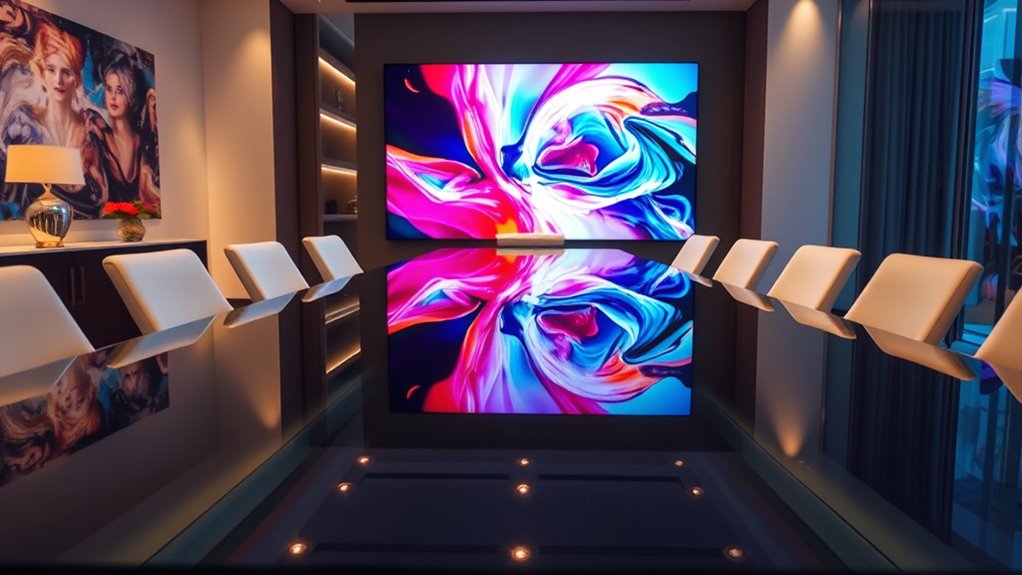
Have you heard about L’Oréal’s latest move in the luxury beauty market? The French cosmetics giant is making a bold step by acquiring Kering’s beauty division for approximately $4.6 billion. This deal, expected to close in the first half of 2026, considerably boosts L’Oréal’s presence in the high-end segment. It includes renowned brands like House of Creed, a heritage fragrance house known for craftsmanship and natural ingredients. By acquiring these brands, L’Oréal is expanding its luxury portfolio and reinforcing its position as a leader in premium beauty products. Additionally, this acquisition highlights how creative practice can be a driving force in product development and innovation.
L’Oréal’s $4.6 billion acquisition of Kering’s beauty division boosts its luxury portfolio and market presence.
This acquisition isn’t just about adding new brands; it’s a strategic move to strengthen L’Oréal’s grip on the luxury beauty market. The deal allows L’Oréal to develop and distribute beauty, fragrance, and cosmetic products for major Kering fashion houses like Gucci, Bottega Veneta, and Balenciaga through long-term licenses. These licenses follow existing contracts, giving L’Oréal immediate access to a well-established portfolio while planning for future growth. With this, L’Oréal can leverage Kering’s luxury influence to reach a broader clientele, enhancing its global footprint in the high-end beauty industry.
On the flip side, Kering is shifting its focus toward its core strengths—fashion and leather goods. The company, known for brands like Gucci, Saint Laurent, and Balenciaga, will transfer its beauty operations to L’Oréal, enabling it to streamline operations and concentrate on its main luxury fashion offerings. The sale is part of Kering’s broader financial strategy to optimize resources and prioritize high-margin sectors. This move helps Kering free up capital and management bandwidth, allowing it to double down on its core competencies. Kering established its beauty division in 2023, signaling its strategic decision to divest from beauty and focus on its heritage in fashion and accessories.
The deal also marks a strategic alliance between the two giants, combining Kering’s luxury expertise with L’Oréal’s prowess in beauty. This partnership opens doors for collaboration in wellness and other new markets, creating opportunities for innovation and growth. Both companies stand to benefit from shared knowledge and expanded market reach, giving them a competitive edge in a crowded landscape.
Financially, the acquisition strengthens L’Oréal’s position in the luxury segment, allowing it to tap into new revenue streams and improve operational efficiency. It also enhances its global influence, providing access to prestigious brands and their loyal customers. For Kering, the sale provides financial flexibility and allows a sharper focus on its high-margin fashion segments. Overall, this deal reshapes the luxury beauty landscape, positioning L’Oréal at the forefront of premium cosmetics and fragrances while enabling Kering to concentrate on its core fashion empire.
Frequently Asked Questions
How Will This Acquisition Impact Kering’s Luxury Brand Portfolio?
This acquisition doesn’t directly impact your core luxury brand portfolio. Kering will stay focused on its high-margin fashion, leather goods, and jewelry segments, which remain unaffected. The sale of Kering Beauté allows the company to streamline operations, free up capital, and concentrate on its flagship brands like Gucci and Saint Laurent. Meanwhile, L’Oréal’s entry into luxury fragrances expands the market, but your luxury brands continue to thrive independently, maintaining their prestige.
What Are L’Oréal’s Plans for Integrating Kering’s Beauty Assets?
Imagine L’Oréal as a master chef adding rare, exquisite ingredients to its kitchen. You’ll see them carefully blend Kering’s luxury brands into their existing portfolio, creating a seamless, innovative menu. They plan to leverage their expertise to develop new products, expand brand reach, and harness synergies. By fostering close collaboration and establishing joint ventures, L’Oréal aims to elevate these assets, ensuring they flourish within its global beauty empire.
Will This Acquisition Affect Kering’s Existing Partnerships?
Yes, this acquisition will impact your existing partnerships. You’ll see a shift period where licensing agreements and collaborations shift from Kering to L’Oréal, possibly causing delays or adjustments. You’ll need to stay alert to changes in distribution, marketing, and supply chain management. Effective communication will be vital to guarantee smooth collaboration, maintain brand integrity, and meet performance expectations during the integration process.
How Does This Deal Influence the Global Beauty Market Competition?
You’ll notice that L’Oréal’s acquisition boosts its market share to over 15%, making it the largest global beauty company. This deal intensifies competition by consolidating luxury and premium brands, pressuring rivals like Estée Lauder and niche brands to innovate or merge. It also raises barriers for new entrants, pushes competitors to focus on tech and sustainability, and shifts the industry towards larger conglomerates dominating the landscape.
What Are the Future Growth Strategies Post-Acquisition?
You can expect L’Oréal’s future growth strategies to focus on expanding its luxury brand portfolio, especially in Asia and emerging markets, by leveraging the heritage and prestige of acquired brands like Creed and Kering’s houses. They’ll also develop new wellness and longevity products, integrate innovative digital experiences, and strengthen distribution channels. Collaborations and shared R&D will drive innovation, ensuring these brands stay modern, desirable, and competitive in the global luxury beauty landscape.
Conclusion
This deal is like a carefully crafted brushstroke on a vast canvas, shaping the future of beauty. Imagine the possibilities as L’Oréal now holds Kering’s beauty brands—each one a vibrant color ready to blend into your world. With this $4.6 billion move, you can expect the industry’s palette to expand, inspiring innovation and new trends. Just as a master artist transforms a blank space, L’Oréal’s acquisition paints a bold new chapter in beauty’s evolving story.
